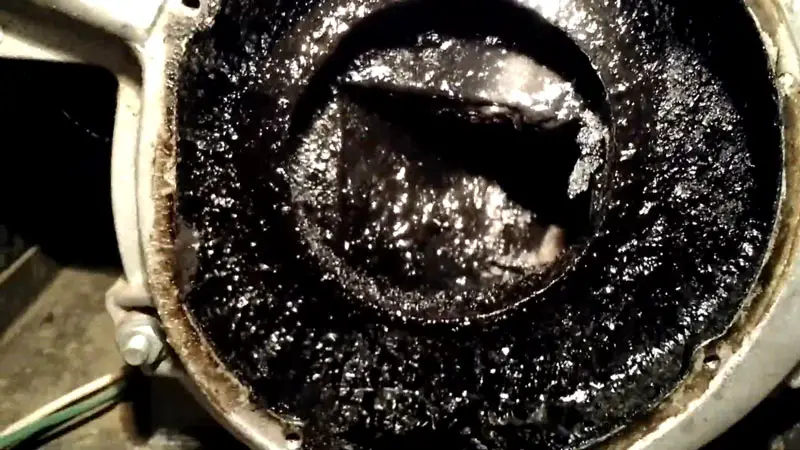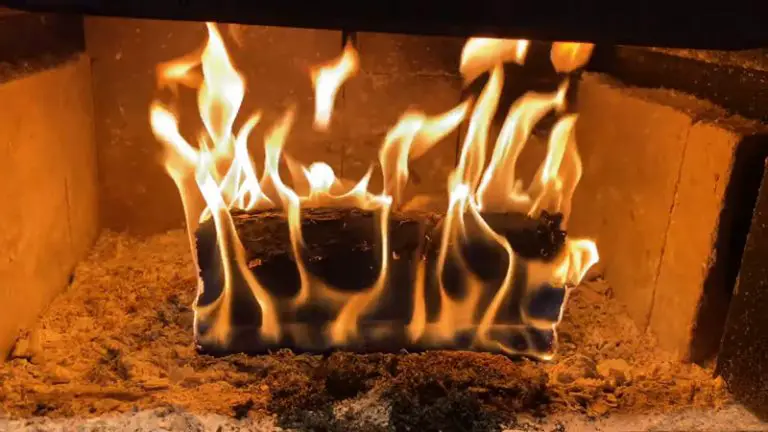What Wood Produces The Least Creosote

Adding other hardwoods to your fire can increase the life of your wood stove by up to 50%. Smokeless and form less creosote with ash, which means reduced drying time.
Low moisture content also reduces drying time, as there is no need for a long soak before use. Seasoned logs will smoke less and create much less creosote–saving you both money and environmental damage in the long run.
It’s important to keep an eye on moisture levels so that your wood stove doesn’t dry out too quickly–a common problem with new stoves.
You'll Learn About
What Wood Produces The Least Creosote?
Adding other hardwoods to your fire can increase the length of time you will have a burning fire. Smokeless fires produce less creosote, meaning they require less cleaning and drying time after use.
Higher moisture content in logs results in faster burning and reduced smoldering–ensuring there is little chance for flare-ups or rekindling once the blaze has been extinguished. Seasoned logs will also burn more slowly which means they create less creosote.
Moreover, this harmful by-product is highly flammable and can easily spread dangerous flames throughout your home if not properly managed.
By taking these simple steps into consideration, you’ll be able to enjoy a cozy night’s sleep knowing that your loved ones are safe within arm’s reach should an emergency occur.
Seasoned logs make less creosote
Creosote is an oily liquid that forms on wood when it’s exposed to the elements. Seasoned logs produce less creosote because they are smokeless and don’t emit moisture as young, unseasoned lumber does. The fewer pollutants in the air, the less chance there is of creosote forming on your walls or rooflines.
Add Other Hardwoods For A Longer-Lasting Fire
Creosote is a byproduct of the combustion process in wood, and it can build up over time. Not all woods produce creosote; hardwoods like oak or maple are less likely to do so.
By adding other hardwoods to your firewood pile, you can lengthen the life of your fire and eliminate the need for creosote removal later on down the road. Make sure to research which types of hardwood will work best with your specific fireplace before buying any wood.
If you find that your home suffers from frequent fires due to faulty wiring or improper installation, consider replacing all of your old wooden furnishings with new ones made out of harder materials.
Smoke Less And Form Less Creosote With Ash
If you’re looking to reduce your creosote and smoke emissions, choosing a wood with low creosote production may be the answer for you. Ash is a natural substance found in many different types of trees that helps to reduce creosote formation.
Choosing an ash-treated wood can help significantly cut down on your smoky smells and Creosote build-up over time. Remember that not all woods produce less creosote; it’s important to do your research before making any decisions about which one to choose.
Be sure to ask your local lumberyard or home improvement store if they carry ash-treated wood products – chances are they will.
Low Moisture Content
If you’re looking for wood with little to no creosote, Douglas Fir is a good option. This tree has low water content which means it dries quickly and doesn’t require any special treatment before using it in your projects.
Pine also produces little to no creosote, making it another great candidate for use in wet areas such as bathrooms or kitchens. While other woods like oak may give off more fumes during the drying process, they still shouldn’t be used if you have children or pets in the home.
When purchasing lumber make sure to inquire about its moisture content so that you don’t end up with drywall that needs regular repairs due to water damage.
Seasoned Logs Smoke Less
Seasoned logs produce less creosote than fresh or newly cut wood, which forms less of a fire hazard. This is due to the presence of oils and resins that retard combustion.
Creosote can cause serious health risks when inhaled, so using seasoned lumber reduces your risk of this problem. Additionally, using seasoned wood also means you’ll have a shorter restoration process if something goes wrong with your fireplace later on down the road- it will simply need more seasoning rather than completely replacing the log cabinetry.
Finally, by choosing seasoned lumber you’re also supporting environmentalism- taking care of our forests lowers their depletion rates over time.
Which wood has less creosote?
There is a lot of confusion over which wood has less creosote. The truth is that there isn’t a clear answer, and the amount of creosote produced will depend on many factors including the type of wood, how it was treated, and how it was used.
However, some woods such as pine tend to have less creosote than other types of wood. Fir is the best choice when it comes to wood that has less creosote because it burns slower and leaves finer ash than hardwoods. Additionally, fir is less messy to handle than other softwood species, such as pine, spruce, and balsam.
Pine, spruce, and balsam are all softwood trees which means they tend to burn quickly and leave behind a lot of ash particles. This makes them difficult to light fires with without leaving lots of residues behind in your fireplace or stovetop. Creosote is an oil-based byproduct of combustion which can form on any type of wood if it’s not burned properly.
Softwoods tend to produce more creosote due to their higher moisture content compared to hardwoods. This means that they take longer to combust resulting in lower levels of creosote emissions from your engine.
What is the cleanest burning firewood?
There is no one answer to this question as different types of wood burn at different rates and produce different levels of heat. However, some types of firewood that are considered the cleanest burning include hardwoods like oak and maple, which release fewer pollutants into the atmosphere than softer woods like pine.
There is a lot to consider when choosing the right firewood for your fireplace. The cleanest burning wood is typically that which has been dried in direct sunlight or under a strong light source. It’s also important to make sure that you burn the wood properly and follow proper burning procedures. Make sure to clean up after yourself, as leaving behind ashes and debris can lead to dangerous levels of pollutants in the air.
What is the safest wood to burn?
There is no definitive answer when it comes to what is the safest wood to burn. However, there are a few things you can do to reduce your risk of getting sick from burning wood:
- Choose certified organic or sustainably managed lumber whenever possible. These woods have been approved by an independent organization for their environmental practices.
- Check the license and certification number on any piece of wooden furniture before buying it. If the information isn’t visible, ask the seller if they can provide a copy. This will help ensure that the lumber has been treated correctly and doesn’t contain dangerous chemicals or toxins.
- Only use fresh, unseasoned wood in a stove or fire pit.
- Never use old beams or boards that have been sitting around for years. They may contain harmful levels of moisture and insects which could make you sick.
Choose a Dense Hardwood
One of the safest woods to burn is dense hardwood such as oak, maple, or hickory. These woods are high in energy and will produce a lot of heat when burned. Make sure you choose a dense hardwood that is pre-sorted so there are no splinters present.
Check for Splinters Before Burning
Before you start burning any wood, make sure to check for any small pieces of wood that may have become lodged in the fire starter or igniter mechanism. If these pieces get stuck while the wood is burning, they can cause an alarming explosion.
Make Sure the Fire Is Properly Lit and Burning Hot
Make sure your fire is properly lit before starting to burn your wooden items and keep it burning hot throughout the entire process.
Not only will this ensure safe burning practices but it will also help speed up the process by creating more heat within the wood itself.
Keep an Eye on Temperature
It is important to monitor the temperature of the wood you are burning, as this will create even heat and prevent any potential accidents. Safe woods include hardwood, cedar, pine, or red oak – these are all considered safe to burn without creating dangerous sparks or flames.
Don’t use softwoods like pine or spruce in your stovetop fire because they can easily catch on fire and cause a dangerous situation. Make sure that there is enough ventilation around the area where you are burning wood; too much smoke could lead to breathing complications in those nearby.
Keep small children away from open flames and make sure your eyes stay healthy by always wearing goggles when working with woodburning stoves.
What is the best wood for firewood?
There are a lot of different types of wood that can be used for firewood. Some people prefer hardwoods, while others prefer softwoods. However, the best wood for firewood depends on your specific needs and preferences.
Choose The Right Wood For Your Needs
Not all woods are created equal when it comes to burning; some will produce more heat and give off a longer, hotter flame than others. Before you start gathering firewood, make sure to research the different types of wood that are available in your area and select the one that is best suited for your needs.
Season The Wood Correctly
Firewood burns best when it’s properly seasoned – this means getting rid of any moisture content before you start using it. This can be done by drying the wood completely or soaking it in water for several hours before starting to burn it down. Don’t overburn the wood either – keep a close eye on how much smoke you’re producing and avoid burning too quickly so you don’t create an unnecessary fire hazard.
Avoid Mixed Woods
When choosing which kind of wood to use for your fireplace, stick with hardwoods only – mixed woods such as oak and maple will not provide enough heat or flames and may even cause damage to your home due to their high flammability levels.
Look For Hardwood Species
When selecting hardwoods for your next log set-up, look for species like white cedar, red oak, or hickory – these trees have been tested time and again through centuries of traditional heating methods.
Finally, never use less expensive softwoods like pine because they simply won’t provide enough sparks when burned. Also careful about drywall edges.
To Recap
The wood of a Creosote Bush is less likely to produce Creosote than other types of wood. This is because the oils in the Creosote Bush’s bark bind with tar that forms from burning materials, and the low content of water vapor in the air around it helps prevent creosote formation.






